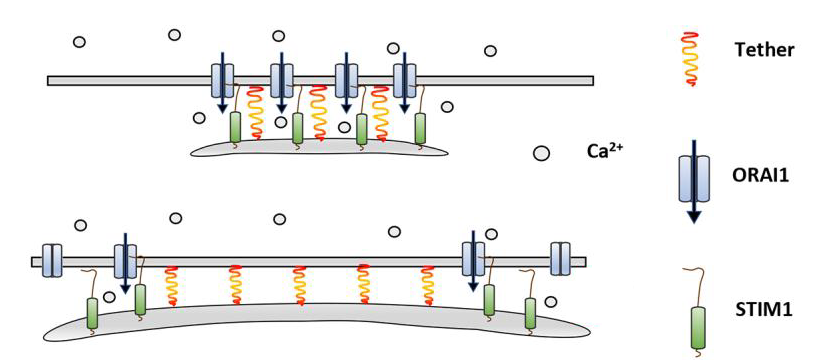Longer is not always better for calcium signaling
The store-operated calcium entry SOCE pathway sustains calcium signals that control immune response and muscle function. SOCE is activated by the calcium depletion of a specific compartment called the endoplasmic reticulum and operated by the protein STIM1 which undergoes a series of conformational changes that open ORAI1 cell membrane ion channels, causing an influx of calcium into cells.
SOCE requires the endoplasmic reticulum to move closer to the cell membrane, forming contact sites. Despite the importance of these contact sites for SOCE is known, the role of their size and location during SOCE remains poorly understood.
Changes in contact site morphology
In a recent study published in the Journal of Cell Science, scientists from the laboratory of Prof. Nicolas Demaurex discovered that contact sites become larger when SOCE is activated. To find out what this change means in terms of function, they studied contact sites that were naturally and artificially extended by tethers. The researchers developed specific, customized bioinformatics tools to automatically measure their morphology from electron microscopy images.
Longer is not always better
The research team was surprised to discover that longer contact sites did not allow more calcium to enter. Instead, the longer contact sites coupled the membranes more tightly, pushing STIM and ORAI1 proteins to the extremities of contact sites and preventing their interactions, as seen on the Figure below. These findings provide a new understanding of the calcium signaling processes involved in immune responses and muscle function.

Shorter contact sites (upper configuration) allow a proper functioning of SOCE whereas longer contact sites (lower configuration) push STIM1 and ORAI1 proteins to the extremities of contact sites, making SOCE less efficient. © adapted from Figure 8 in Henry et al. JCS 2022.
17 Mar 2022
